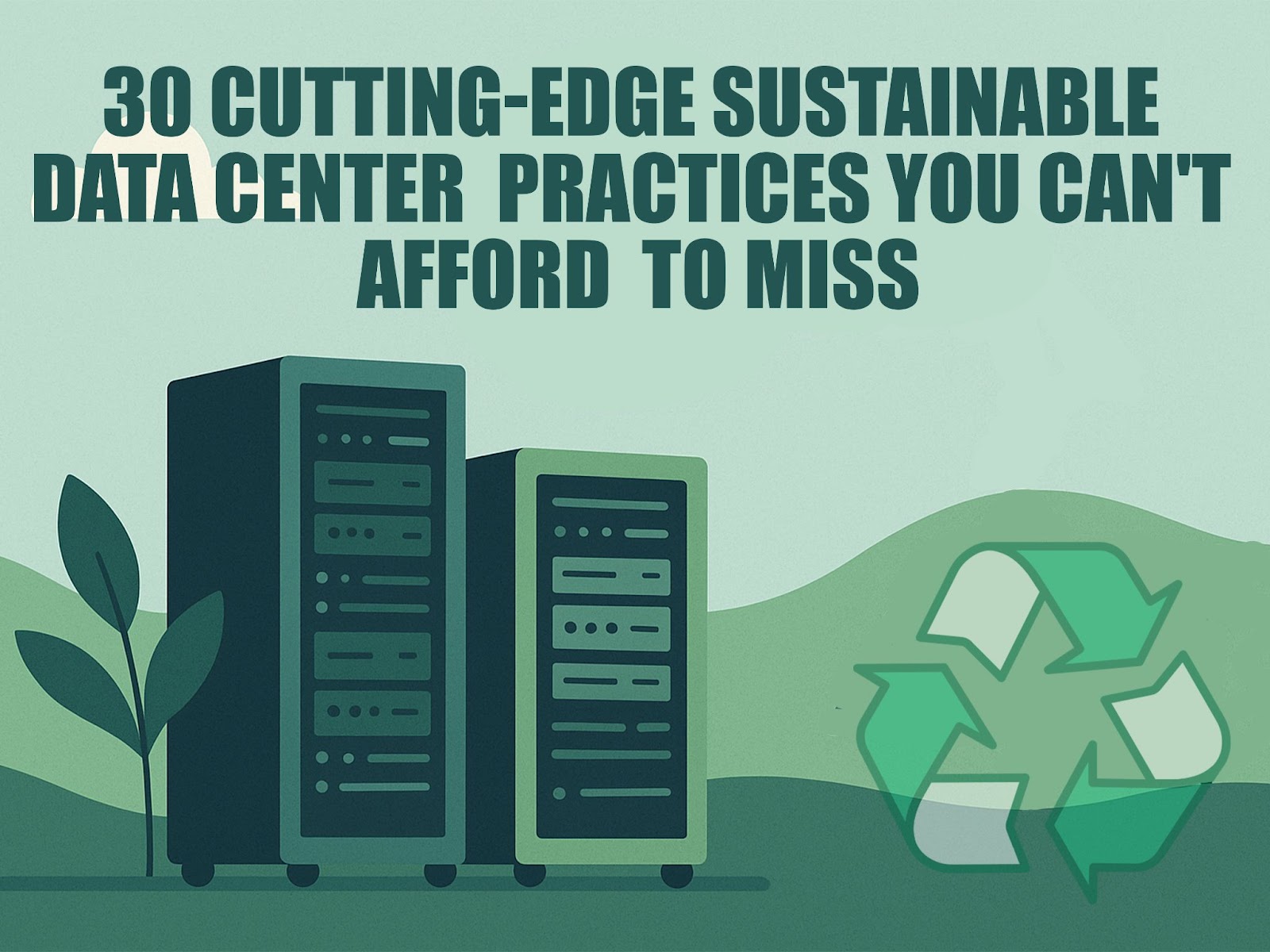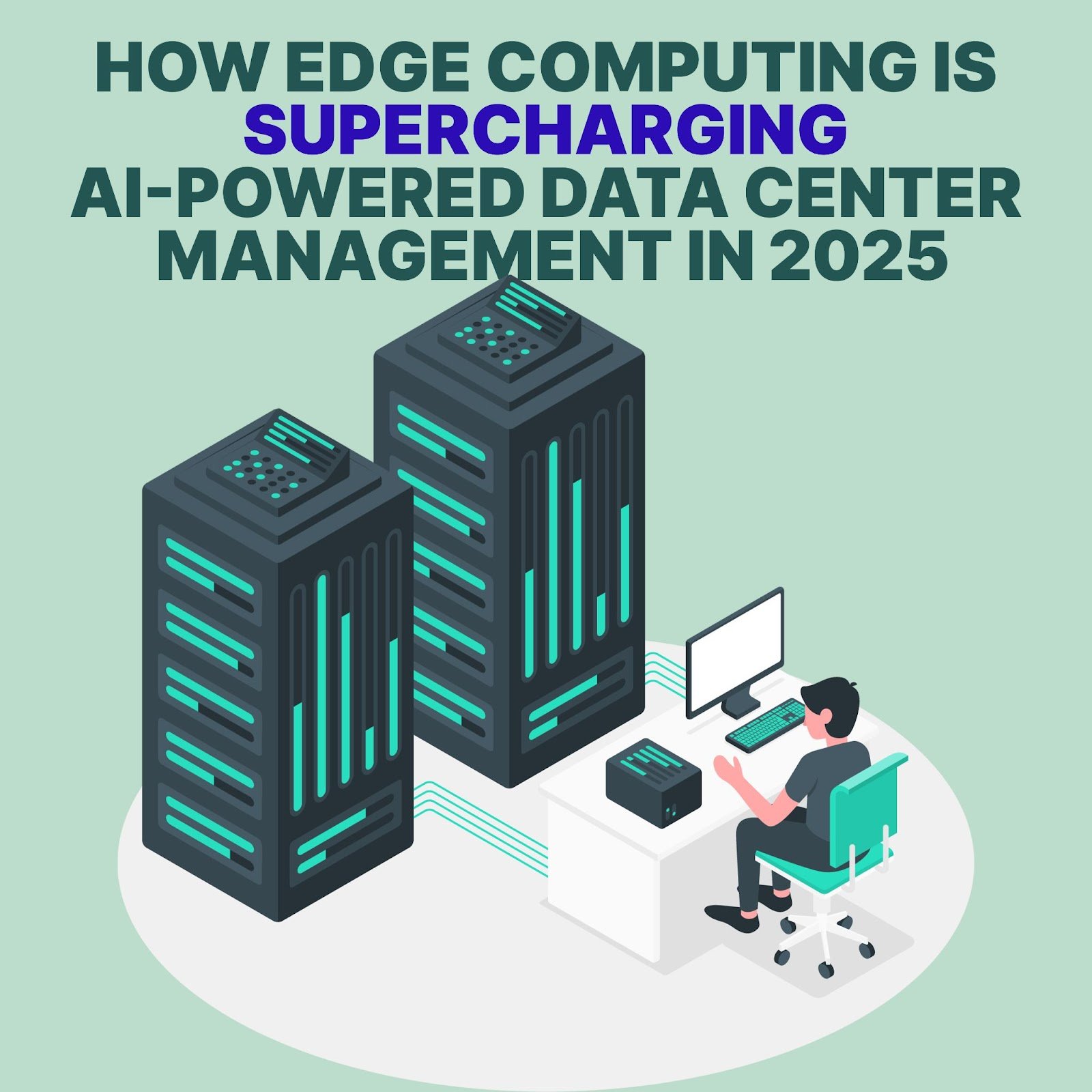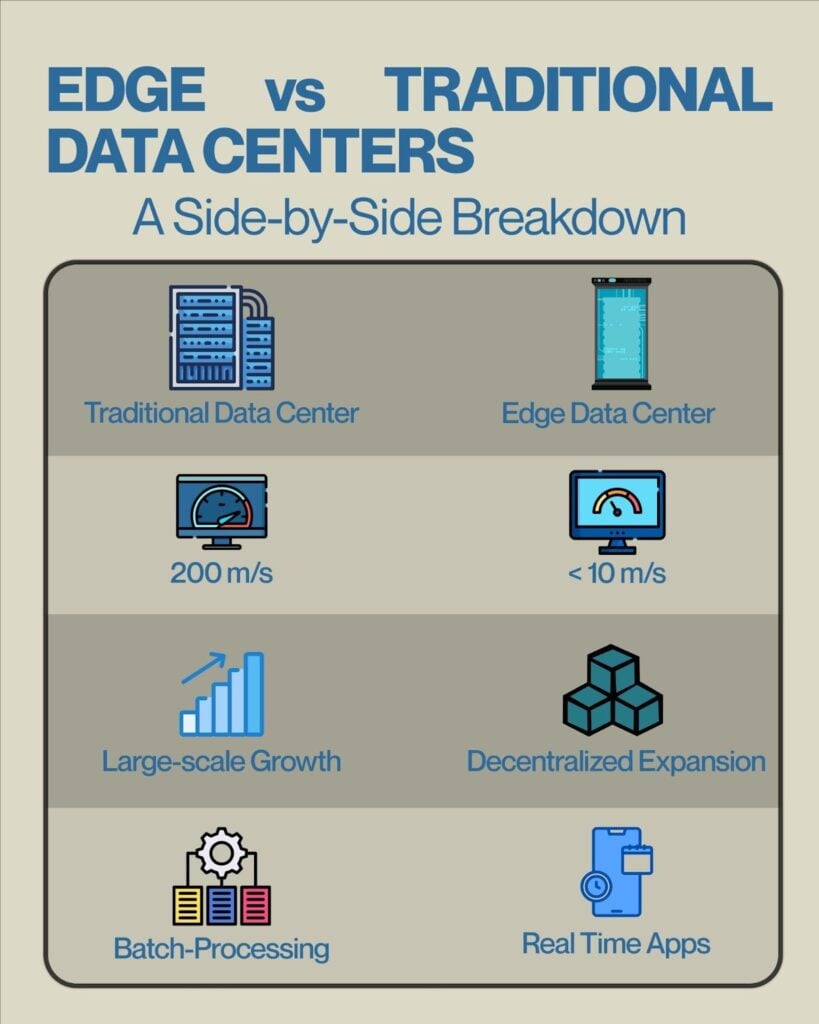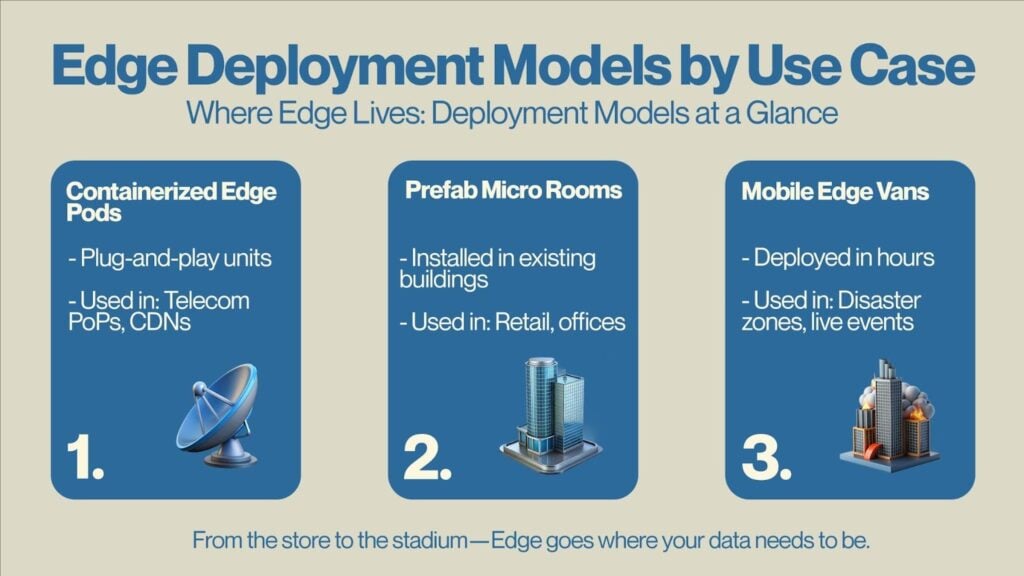In 2025, businesses face a massive challenge: handling an exploding amount of data thanks to data centers. From AI training models to real-time edge computing and global cloud services, the pressure on infrastructure is at an all-time high. Traditional server rooms or outdated hosting just don’t cut it anymore.
If your company still relies on outdated infrastructure, you’re risking downtime, security threats, and missed innovation opportunities. Without access to modern data center services, even simple tasks like scaling applications or safeguarding customer data become risky and expensive.
That’s where next-gen data center providers come in. These new players — offering cutting-edge data center services, from colocation data centers to AI-optimized environments — are transforming how industries scale, secure, and sustain their operations. In this blog, we’ll explore who these providers are, the technologies they’re using, and what makes them the top picks for 2025.
Whether you’re in finance, healthcare, or tech, understanding the data center landscape is no longer optional. It’s strategic.
Market Overview & Major Players: Who’s Powering the Data Future?
Understanding the 2025 Data Center Market
The global demand for data center providers has never been higher. In 2025, enterprises, governments, and startups are all racing to expand their digital capabilities. Behind it all? A fast-growing ecosystem of data center services that enable everything from secure storage to real-time computing.
According to recent reports from McKinsey, the global data center market is projected to exceed $340 billion by 2027, growing at a CAGR of over 10%. This growth is driven by rising demand for cloud data centers, AI workloads, smart devices, and edge computing infrastructure.
Here are the key categories dominating the market:
- Hyperscalers: Think AWS, Microsoft Azure, and Google Cloud. These giants are expanding at a massive scale with global cloud data centers.
- Colocation Data Centers: Mid-size and large businesses rent rack space in these facilities to avoid the cost and complexity of building their own.
- Managed Hosting Providers: Ideal for companies wanting a blend of control and third-party expertise.
- Edge Data Centers: Smaller, distributed facilities for low-latency workloads like IoT, AR/VR, and real-time analytics.
By 2025, hyperscalers will account for more than 60% of global data center infrastructure investments, especially across North America, Western Europe, and Southeast Asia (Reuters).
Where Are the Big Investments Going?
The biggest trends in investment include:
- Hyperscale expansions in rural and edge areas to meet new AI and cloud requirements.
- Modular data center designs that reduce build time and operational costs
- The growing interest in green data centers, with sustainability becoming a competitive differentiator.
Major players like Digital Realty, Equinix, and CoreSite are also doubling down on colocation data centers with built-in AI readiness and renewable energy use.
Regional hotspots to watch in 2025:
| Region | Key Investment Trend |
| North America | AI and GPU-optimized facilities |
| Europe | Climate-neutral and energy-efficient builds |
| Asia-Pacific | Edge and 5G-enabled infrastructures |
| Middle East | Modular and hybrid cloud zones |
Explore our full suite of future-ready data center services. From colocation to managed hosting, we’ll help you stay secure, scalable, and sustainable in 2025. Contact our experts today
Hyperscalers vs. Colocation Providers: Which One Fits Your Strategy?
What Are Hyperscalers?
Hyperscalers are global tech giants like Amazon Web Services (AWS), Microsoft Azure, and Google Cloud Platform (GCP). These providers operate massive cloud data centers designed to handle millions of concurrent workloads. Their facilities span continents, offering on-demand resources at scale.
They are ideal for:
- Companies that need global reach
- Fast scalability for cloud-native applications
- Centralized data center infrastructure for compute-heavy AI and ML tasks
Recent Developments:
In 2024, AWS began showing signs of slowing its hyperscale expansion, especially in the U.S., according to Reuters and Business Insider. Rising operational costs, energy demands, and regulatory hurdles have pushed many hyperscalers to seek partnered models with local colocation data centers.
What Are Colocation Data Centers?
Colocation providers — including companies like Digital Realty and Iron Mountain — offer clients space, power, cooling, and security. Clients bring their servers and control their configurations while the provider manages the facility itself.
They are preferred by:
- Enterprises that want more control
- Organizations with strict compliance and data residency needs
- Businesses aiming for predictable performance with custom SLAs
Colocation is especially useful in regulated industries like finance, healthcare, and government, where data center security and infrastructure control are essential.
Managed Hosting: Bridging the Gap
If hyperscale is too hands-off and colocation feels too manual, Managed Hosting Providers might offer a perfect balance. These services manage your IT stack while giving you strategic input and access to the data center infrastructure.
Popular among mid-size businesses, managed hosting supports:
- Fully-managed infrastructure
- Built-in data center security
- Upgraded options for data center uptime guarantees
According to Molex, the trend is now shifting toward hybrid models, where hyperscalers collaborate with local providers for AI-ready, modular, and energy-efficient deployments.
Quick Comparison: Hyperscaler vs. Colocation
| Feature | Hyperscalers | Colocation Providers |
| Control Level | Low | High |
| Setup Speed | Fast (minutes) | Moderate (days to weeks) |
| Compliance Customization | Limited | Fully Customizable |
| Cost Predictability | Variable (pay-as-you-go) | Fixed (long-term contracts) |
| Green/Sustainability | Improving | Strong focus on the EU, US |
Let us help you compare hyperscale, colocation, and managed hosting options. We specialize in helping enterprises pick the right strategy based on their unique workloads. Request a free consultation today.
Types of Data Center Providers: Finding the Right Fit for Your Business
Data centers aren’t one-size-fits-all. In today’s ecosystem, businesses can choose from a range of data center providers tailored to their specific needs — whether that’s compliance, performance, location, or scalability. Below are the four primary types dominating 2025:
Colocation Data Centers: Flexibility Without Full Ownership
Colocation data centers allow businesses to lease physical space, power, and cooling while retaining full control over their hardware. You bring the servers, and the provider delivers world-class data center services such as redundant power, climate control, and 24/7 security.
Key Benefits:
- Greater control over configurations and equipment
- Tiered SLAs for data center uptime
- Ideal for meeting regional compliance requirements
Hybrid & Modular Trends
In 2025, colocation is going modular. Companies like Digital Realty and Equinix now offer modular deployments that scale with business demand, supported by high-efficiency data center infrastructure.
Example from JLL:
Colocation centers are adopting prefabricated modular designs, reducing deployment time by up to 40% while maintaining top-tier data center security and PUE levels below 1.3.
Cloud Data Centers: Scale, Speed & Service
Cloud data centers are virtualized infrastructures owned and operated by cloud service providers (CSPs) such as AWS, Microsoft Azure, and Google Cloud. These platforms offer elastic, pay-as-you-go computing and storage, perfect for dynamic workloads.
Best Use Cases:
- Businesses that need global reach
- Rapid testing and deployment of new apps
- Scalability without upfront hardware investments
AI-Ready Growth
As AI workloads grow in complexity, CSPs are building specialized zones in cloud data centers equipped with GPU clusters and custom silicon.
A recent report from Molex shows that CSPs are leading the development of AI-optimized cloud zones, significantly reducing training time for large language models (LLMs).
Edge Data Centers: Powering Real-Time Innovation
Edge data centers are smaller, distributed facilities that process data closer to where it’s generated. They are critical for applications that require ultra-low latency, like smart cities, autonomous vehicles, and AR/VR platforms.
Why It Matters:
- Reduces lag in real-time services.
- Helps offload traffic from centralized cloud data centers.
- Supports faster deployment of IoT and 5G-based services.
These centers are often built with compact, modular data center infrastructure and high-density fiber optics.
According to Effect Photonics, edge computing is expected to account for 20% of global enterprise data processing by 2026.
AI‑Optimized Data Centers: The Rise of “AI Factories”
AI-ready facilities — also known as “AI data centers” — are purpose-built for high-density, high-heat environments running thousands of GPUs or AI chips. These centers require unique infrastructure: robust power delivery, advanced cooling, and intelligent automation.
Key Features:
- High-density racks (up to 80kW per rack).
- Liquid and immersion cooling systems.
- AI-driven thermal management and fault prediction.
A recent Barron piece described AI data centers as the “factories of the future,” where workloads like training LLMs, deep reinforcement models, and generative AI models will live.
These centers demand stronger data center infrastructure and faster data center services integration.
Secure Colocation Hosting in Amsterdam: Why Reboot Monkey is the Ultimate Choice!
Core Infrastructure Components: The Backbone of Next-Gen Data Centers
Modern data center providers are no longer just about racks and servers. Today’s infrastructure must be energy-efficient, AI-ready, and resilient against both physical and cyber threats. This section covers the four pillars that define the strength of a data center provider in 2025.
Power & Energy Management: Building Smarter, Greener Backbones
Power is the lifeblood of any data center. In 2025, providers are shifting away from conventional grid dependence and embracing alternative sources.
Trends to Watch:
- On-site solar and wind power integration.
- Small modular reactors (SMRs) for long-term reliability.
- Battery-backed green data centers.
According to DataCenterKnowledge, many green data centers are now achieving power usage effectiveness (PUE) as low as 1.1, thanks to direct renewable integration and AI-based power optimization.
In Europe, climate-neutral initiatives are pushing data center providers to hit carbon-neutral targets by 2030. Large providers like Equinix have already committed to 100% renewable PPAs in multiple regions.
As per Reuters, more than 60% of new builds in 2025 will include solar or wind as primary power sources.
Cooling & Thermal Design: From Air to Immersion
As server densities increase — especially in AI data centers — traditional air cooling is reaching its limits. Modern data center infrastructure now integrates:
- Liquid cooling systems (coolant pipes near the CPU/GPUs).
- Immersion cooling, where servers are submerged in non-conductive fluids.
- Direct-to-chip cooling for high-density AI clusters.
WSJ reports that liquid and immersion cooling can lower cooling energy costs by over 40% and increase rack density by 2x. These technologies are vital for uptime and for keeping data center services uninterrupted.
Providers also use predictive cooling systems powered by AI, which adjust settings based on live thermal readings.
Connectivity & Fiber Infrastructure: Speed Meets Scalability
High-speed data transfer is essential, especially in cloud data centers, edge data centers, and AI deployments.
Infrastructure Innovations:
- Dense mesh fiber connectivity.
- Software-defined networking (SDN).
- Network function virtualization (NFV).
According to Effect Photonics, advanced fiber systems combined with SDN can reduce latency by up to 60%, enabling real-time processing at scale for edge and cloud environments.
These networks also power-managed hosting providers, giving customers high-throughput connections for business-critical apps.
Physical & Cyber Security: Securing the Digital Fortress
As data centers become critical infrastructure, threats — both digital and physical — are evolving. Modern data center security is layered:
Key Measures:
- Multi-factor physical access controls.
- 24/7 CCTV and biometric scanning.
- Intrusion detection systems.
- SOCs for real-time cyber monitoring.
- Compliance with ISO, NIST, and GDPR standards.
In 2025, AI-based threat detection is becoming the norm. Providers now deploy behavioral analytics and machine learning to stop attacks before they impact data center uptime.
Next-gen data centers must defend against not just hackers, but power failures, physical intrusions, and insider threats — often simultaneously.
Performance, Resilience & SLAs: The True Test of a Data Center
No matter how modern the tech stack, the entire operation is at risk if a data center provider can’t guarantee uptime and efficiency. Performance and reliability are what separate average data centers from elite ones. Here’s how the top providers ensure seamless data center service delivery in 2025.
Uptime Guarantees & Redundancy Models
Uptime is the most important performance metric for any data center provider. The industry standard is measured in tiers:
| Tier | Uptime % | Downtime per year | Use Case |
| I | 99.671% | ~28 hours | Small businesses |
| II | 99.741% | ~22 hours | SMBs with moderate needs |
| III | 99.982% | ~1.6 hours | Enterprises |
| IV | 99.995% | ~26 minutes | Mission-critical services |
Top colocation data centers and managed hosting providers offer Tier III and Tier IV SLAs with redundant power, cooling, and connectivity layers.
Redundancy models such as N+1, 2N, and 2N+1 keep services operational during maintenance or failure.
Redundant systems aren’t just “nice-to-have” — they’re vital for banking, healthcare, and cloud SaaS industries.
Environmental Metrics & Efficiency Standards
While uptime is king, efficiency is the crown jewel. With sustainability now a core KPI, providers are being evaluated on more than just performance. Enter the three main metrics:
| Metric | Meaning | Ideal Range |
| PUE | Power Usage Effectiveness | < 1.4 L/kWh |
| CUE | Carbon Usage Effectiveness | Lower = Better |
| WUE | Water Usage Effectiveness | < 1.8 L/kWh |
Leading green data centers are targeting PUEs under 1.2, with smart sensors and AI algorithms optimizing power allocation.
In Europe, the Climate Neutral Data Centre Pact mandates compliance with these efficiency standards by 2030. This has led to massive investments in low-emission designs, AI-based cooling, and renewable energy sources.
McKinsey reports that AI data centers leveraging predictive analytics can improve energy efficiency by over 25% while maintaining peak data center uptime.
Environmental & Security Integration
The best providers blend performance with data center security and sustainability:
- Smart PUE monitoring alerts for performance drops.
- Redundant systems for environmental controls.
- ISO 50001 and LEED certifications.
A high-performing data center isn’t just about uptime — it’s about doing it securely and sustainably.
Discover how our Tier III and IV-certified data centers deliver 99.99% uptime while staying green. Schedule a walkthrough now.
Sustainability & Green Initiatives: The Green Race Among Data Center Providers
In 2025, sustainability is no longer optional — it’s a business requirement. As energy costs rise and climate regulations tighten, data center providers are racing to reduce emissions, conserve water, and deliver eco-friendly data center services without sacrificing uptime or performance.
Renewable Energy & Carbon Offsets
Many modern green data centers are powered entirely by renewable energy through:
- Long-term Power Purchase Agreements (PPAs) with wind and solar farms.
- On-site solar arrays and microgrids.
- Carbon offset programs to reach net-zero targets.
Major tech players like Microsoft, Meta, and AWS are now signing multi-GW PPAs across Europe and the U.S., pushing hyperscalers and colocation data centers toward climate-neutral goals.
Example:
Reuters reports that Microsoft recently committed to a 100% renewable footprint by 2025, with every new data center running on green power.
These initiatives not only reduce emissions but also improve branding, compliance, and long-term ROI.
Going green is now a selling point — and a competitive edge in global tenders.
Waste Heat Reuse & Water Conservation
Modern data center infrastructure is designed to reduce waste and conserve critical resources.
Waste Heat Recovery:
- Redirects exhaust heat to nearby residential or industrial areas.
- Reduces the facility’s carbon footprint.
- Already implemented in cities like Stockholm, Helsinki, and Amsterdam.
Water-Efficient Cooling:
- Shift toward closed-loop liquid systems.
- Use of recycled and non-potable water.
- Elimination of traditional evaporative cooling towers.
According to Redcentric Data Centres, water-saving technologies are reducing WUE to as low as 0.8 L/kWh, setting a new benchmark for green data centers.
These eco-initiatives are often backed by EU and U.S. incentives, especially in cities adopting net-zero urban plans.
AI‑Driven Energy Optimization
Artificial Intelligence is no longer limited to the applications hosted inside data centers. Now, it’s managing the data centers themselves.
Smart AI Systems:
- Predictive cooling to minimize energy use.
- Real-time power routing and load balancing.
- Forecasting weather, workload, and power surges.
According to McKinsey, AI data centers using autonomous energy systems can reduce cooling costs by up to 30% while extending component lifespan.
These smart-systems also reinforce data center security, identifying anomalies in power, temperature, or network traffic before they become issues.
The most advanced data center providers are blending green tech with smart automation — creating low-emission, high-performance infrastructures.
Cost & ROI Assessments: Evaluating Value Across Data Center Models
While features and performance matter, smart organizations also focus on total cost of ownership (TCO) and long-term ROI when choosing a data center provider. In 2025, the cost equation includes not only hardware and hosting but also power, staffing, sustainability, and scalability.
Cost Breakdown by Data Center Type
| Provider Type | CapEx (Initial) | OpEx (Monthly) | TCO Trend | Notes |
| Colocation Data Centers | High | Medium | Stable | CapEx for hardware; shared infra savings |
| Managed Hosting Providers | Medium | Medium-High | Predictable | OpEx-focused; includes support and services |
| Cloud Data Centers | Low | Variable | Scales fast | OpEx-heavy; pay-as-you-go model |
| Edge Data Centers | Medium | Medium | Growing | Heavy power use, high-performance returns |
| AI Data Centers | Very High | High | Long-term ROI | Heavy power use; high-performance returns |
Many businesses choose hybrid solutions to balance cost, control, and performance, combining cloud scalability with colocation’s predictability or leveraging managed hosting providers for full-stack support.
Cloud Spending Caps and Budget Rebalancing
In 2025, even the largest hyperscalers are re-evaluating spending. Meta, Microsoft, and AWS have started placing capital expenditure caps on new projects due to rising energy and hardware costs, according to Business Insider and WSJ.
As a result, many enterprises are:
- Repatriating workloads from cloud to colocation for cost efficiency.
- Using cloud data centers for burstable or short-term demand only.
- Moving steady-state workloads to managed hosting providers.
Hybrid workload distribution now enables up to 30% cost savings for mid-size enterprises with stable compute demand.
Maximizing ROI Through Efficiency & Automation
Reducing total cost isn’t just about infrastructure — it’s about smarter usage. Here’s how data center providers increase long-term ROI:
- AI-based cooling and energy optimization.
- High rack density to reduce floor space cost.
- Automated provisioning and ticketing.
- Renewable energy to cut long-term utility costs.
These optimizations are especially critical in AI data centers, where energy savings can offset significant hardware investments.
Top Benefits of Colocation Data Centers for Businesses in 2025 | Reboot Monkey
Regulatory & Geographic Influences: How Laws and Location Shape Data Centers
In 2025, the choice of a data center provider isn’t just about performance — it’s also about regulatory alignment, geopolitical stability, and local tax incentives. As governments tighten data governance rules and communities push for environmental responsibility, data center planning has become a legal and strategic chess game.
Regulation & Compliance: A Growing Priority
Europe – NIS2 and Climate Neutral Pact
The European Union has enforced the NIS2 Directive, expanding cybersecurity requirements across critical infrastructure, including cloud data centers and colocation data centers.
Key mandates under NIS2:
- Mandatory reporting of cyber incidents.
- Third-party risk management.
- Enforced compliance audits.
Alongside that, EU countries are rolling out aggressive climate regulations under the Climate Neutral Data Centre Pact, requiring providers to:
- Operate on 100% renewable energy by 2030.
- Publish water and energy metrics (PUE, WUE, CUE).
- Meet strict data center infrastructure efficiency targets.
Providers not aligned with these regulations risk heavy fines, certification loss, or regional bans.
United States – Federal Initiatives
In the U.S., federal agencies are rolling out stricter energy reporting, zero-emission goals, and grant programs supporting green data centers. There’s also growing scrutiny on:
- Data center security for government contractors.
- Cross-border data flow regulation.
- AI workload transparency.
Geographic Hotspots & Challenges
Location still plays a critical role in the performance, cost, and compliance of data center services. But in 2025, public pushback, resource constraints, and climate impacts are reshaping where data centers are welcomed — or rejected.
| Region | Opportunity | Challenge |
| Nordics | Abundant green energy, cool climate | Remote locations increase latency |
| U.S. Midwest | Affordable land, energy tax credits | Grid strain in summer months |
| Singapore | High connectivity, business-friendly laws | Government caps on new DCs (cooling and space) |
| UAE & Qatar | Government-backed smart infrastructure | Water and energy-intensive cooling |
According to Business Insider, some U.S. counties are imposing moratoriums on new builds due to energy pressure and land use debates.
AI and Machine Learning in Data Centers: Transforming Efficiency and Security | Reboot Monkey
Compliance-First is the New Default
Next-gen data center providers are embedding compliance and governance into their infrastructure:
- Dedicated compliance zones for GDPR, HIPAA, and ISO standards.
- Built-in auditing, threat logging, and incident response.
- Legal consultancy bundled with managed hosting providers.
Security and compliance are no longer “checkboxes” — they’re competitive advantages.
Provider Selection Framework: How to Choose the Right Data Center Provider
With so many data center providers offering different models — from colocation data centers to full-service managed hosting providers — choosing the right fit requires a structured, use-case-driven approach.
Whether you’re deploying an AI platform, scaling a SaaS business, or migrating legacy infrastructure, the right provider can directly impact your costs, performance, and long-term success.
Match the Provider to Your Use Case
| Use Case | Best Fit Provider Type | Why? |
| AI/ML Training | AI Data Centers | Full control, physical security, and SLA guarantees |
| Compliance-heavy workloads | Colocation / Managed Hosting | Full control, physical security, SLA guarantees |
| Real-time applications (IoT, AR) | Edge Data Centers | Low-latency, geo-distributed processing |
| High growth/startups | Cloud Data Centers | Elastic scale, fast deployment |
| Mid-size scaling companies | Managed Hosting Providers | Balance of control and cost-effective support |
Evaluation Checklist
Before choosing a provider, assess the following:
Infrastructure
- Tier certification (III/IV).
- Cooling and power systems.
- Green building certifications.
SLAs & Support
- Uptime guarantees (99.99% or better).
- 24/7 support availability.
- Disaster recovery & redundancy levels.
Security
- Physical & cyber protocols.
- Compliance (ISO, HIPAA, GDPR, NIS2).
- AI-enhanced anomaly detection.
Sustainability
- Renewable energy sources (solar, wind).
- PUE/CUE/WUE scores.
- Waste heat reuse programs.
Connectivity
- Proximity to users or edge nodes.
- Fiber density and diversity.
- Integration with CSPs (AWS, Azure, etc.)
Colocation Data Center Services: Reliable Hosting for You
Strategic Tips
- Hybrid works best: Mix colocation and cloud to balance cost, control, and performance.
- Think long-term: Evaluate not just current needs, but growth potential over 3–5 years.
- Use DCaaS for flexibility: Subscription models reduce CapEx while offering scale on demand.
Top-performing organizations treat their data center selection as a strategic decision, not just a technical one.
Conclusion
As digital transformation accelerates, choosing the right data center provider is more critical than ever. From colocation to AI-optimized cloud infrastructure, businesses now have a wide range of options tailored to performance, compliance, and sustainability goals.
The most successful deployments in 2025 will come from providers that combine cutting-edge infrastructure, strong SLAs, and green innovation. As we move into an AI-powered, edge-driven world, your data center strategy must align with both technical needs and long-term business outcomes.
Whether you’re optimizing for cost, scalability, or carbon reduction, the future belongs to providers that are smart, secure, and sustainable. Now is the time to assess, adapt, and align your digital infrastructure with the next generation of possibilities
Whether you’re migrating, scaling, or optimizing, we help you choose, deploy, and manage the best-fit infrastructure. Contact us today to explore colocation, cloud, and managed hosting tailored to your needs.
FAQs:
What do data center providers offer in 2025?
Data center providers now deliver scalable infrastructure with AI optimization, sustainability features, and global connectivity.
How do I choose the right data center provider?
Look for data center providers with strong SLAs, green energy practices, and services that align with your cloud, AI, or edge needs.
Are data center providers responsible for uptime?
Yes, top data center providers offer guaranteed uptime through redundancy models and advanced monitoring systems.
What’s the difference between cloud and colocation data center providers?
Cloud data center providers manage the entire stack, while colocation providers lease space for your hardware with shared services.
Why are sustainable data center providers important?
Sustainable data center providers reduce energy use, and carbon emissions, and help companies meet environmental compliance standards.







